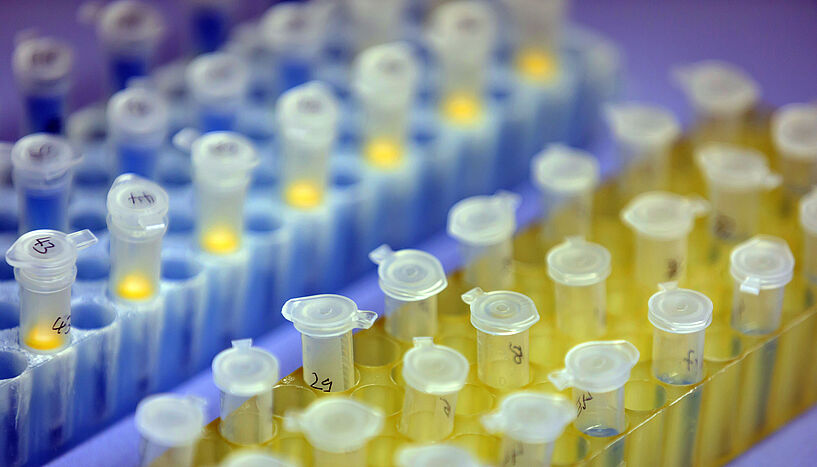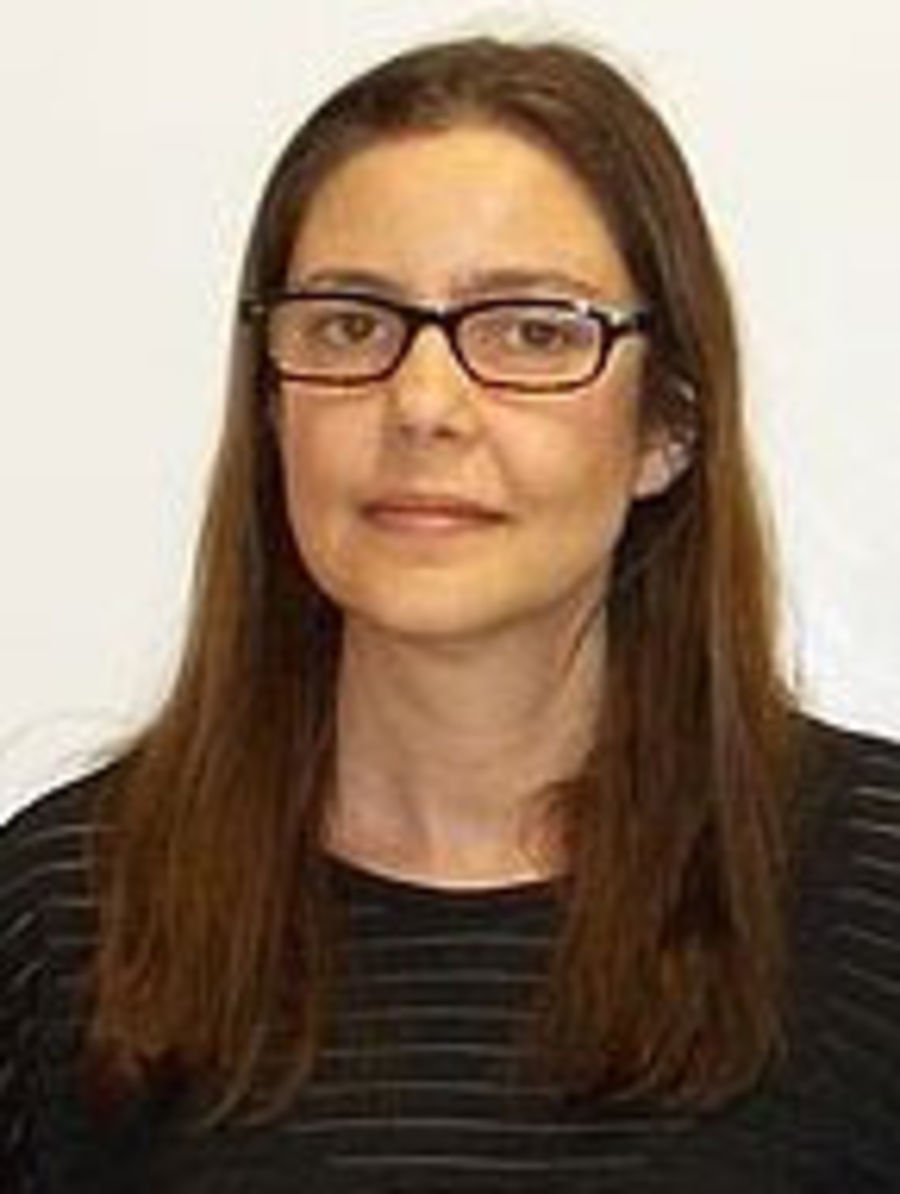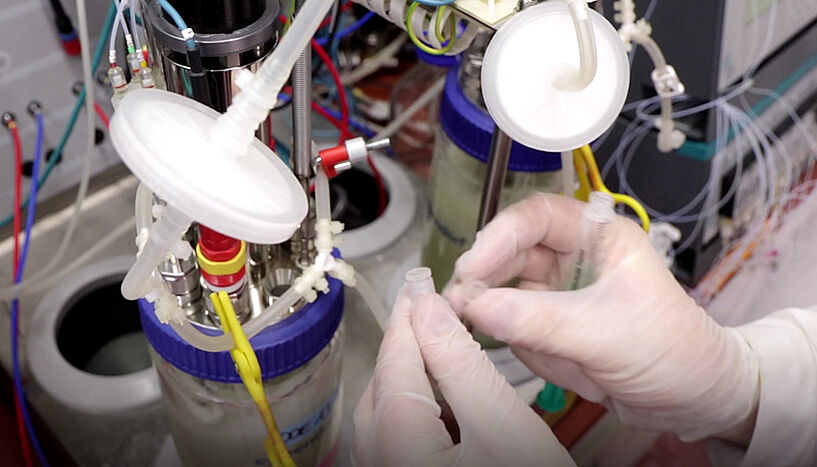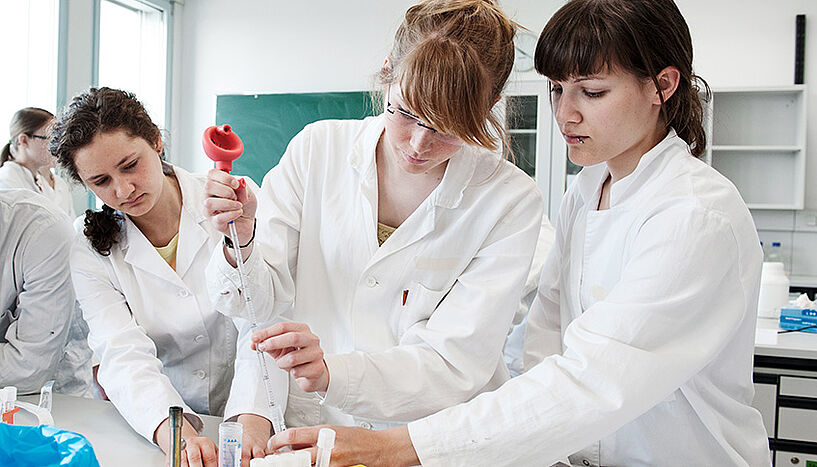The history of life
| 12. Dezember 2018
In the ERC Starting Grant project Evolution of Physiology, biologist Filipa Sousa will spend a lot of time behind the computer and in the lab to find certain genes in microbes that are involved in the energy metabolism. (© University of Vienna/derknopfdruecker.com)
Filipa Sousa has received an ERC Starting Grant for her project Evolution of Physiology: the Link between Earth and Life, in the context of which she and her group investigate the emergence and evolution of energy metabolisms in the course of geologic time.
"We all think about evolution. It is in our nature to wonder where we come from," says Filipa Sousa from the Department of Ecogenomics and Systems Biology at the University of Vienna, where she will conduct her ERC Starting Grant project Evolution of Physiology: the Link between Earth and Life. The main objective is to understand environmental microbial life to gain insights into the physiology of newly discovered lineages, and to understand how they harness and conserve energy. Filipa Sousa in her own words: "I want to understand the evolution of all types of energy metabolisms."
Domains of our ancestors
Originally, Sousa started to conduct research on the microbes Archaea. Many of them are able to live under extreme conditions, such as in volcanos with temperatures of about 80 degrees Celsius. "Not all of them are extremophiles. Now we know that they are everywhere." Together with Bacteria, Archaea were the first domains of our ancestors dating back nearly four billion years. At that time, the climate and the whole surroundings were very different from today. For example, there was no oxygen on Earth, when it was formed.
The funding of pioneering basic research is one of the priorities of the European Union. To this end, the European Research Council (ERC) has been established. To receive support, research projects must have a high potential for innovation. 53 ERC grants have already been awarded to researchers of the University of Vienna since 2007: 14 Advanced Grants, ten Consolidator Grants, 26 Starting Grants and three Proof of Concepts. ERC Grants at the University of Vienna
"That's how we know that the first microbes gained their energy without using oxygen. Even today we know of microbes – for example at the bottom of the sea – that have an oxygen-independent metabolism and die when they are exposed to oxygen." In her ERC project, Filipa Sousa investigates the different possibilities that microbes used and use to gain energy from their surroundings – in short: She investigates how their metabolisms work. "We humans use oxygen, plants have photosynthesis, and bacteria and Archaea have a very wide range of metabolisms," the biologist explains.
Looking back in time
The question that arises is how it is possible to look back in time in the case of microbes. "In order to understand our past, we have to understand the present," says Sousa. "In a first step we characterise all known solutions that microorganisms use. This way, we get a good picture of how diverse microorganisms can be."
To trace evolutionary development, the scientists use a method called phylogenomics. This method is used to draw conclusions about the evolution of a protein or gene over time. This will allow the researchers to pinpoint genes or gene families whose function is not known, and express them in microbes to see what happens. Once the gene is expressed, the researchers can purify it to get an idea of their function.
The order of events
"Major advances in sequencing techniques are filling databases with insights into microbial taxonomic diversity, in particular about new uncultured lineages," says Filipa Sousa. "Our research includes a large-scale comparative phylogenomics analysis of genes involved in and genomically associated with physiology combined with experimental data, using as evolutionary constraints geochemical records of available environmental energy sources."
Using a top-down approach, the researchers will successively eliminate biological traits that cannot be ancient, constraining the physiological space of older microbial solutions. "Our work will lead to testable predictions regarding the order of events in evolutionary bioenergetic transitions. The focus on biological energy harnessing will narrow the gap between geochemistry and microbiology." (td)

Filipa Sousa works at the Archaea Biology and Ecogenomics division at the University of Vienna. She leads the working group Genome Evolution and Ecology with a research focus on bioenergetic evolution, physiology and ecology of Archaea, and automatic classifications of metabolism based on (meta)genomic data. In July 2018, she received an ERC Starting Grant to implement her project Evolution of Physiology: the Link between Earth and Life. (© University of Vienna)
Ass.-Prof. Maria Filipa Baltazar de Lima de Sousa, PhD, will start her project "Evolution of physiology: the link between Earth and Life" at the beginning of 2019 at the Department of Ecogenomics and Systems Biology at the University of Vienna. It is funded by an ERC Starting Grant.



